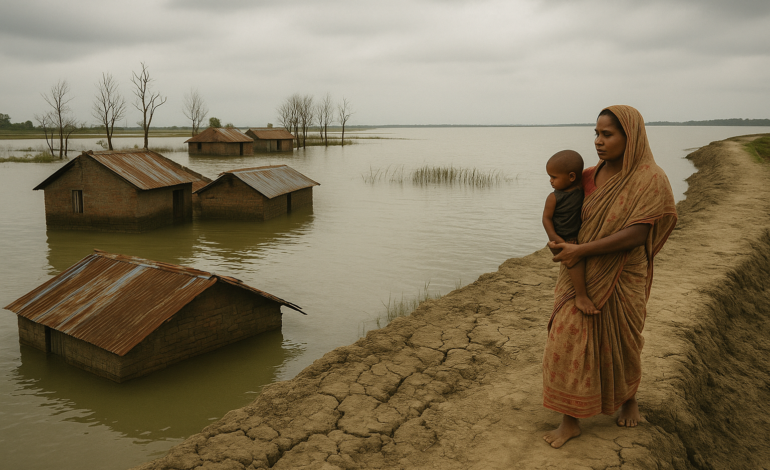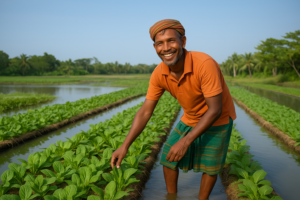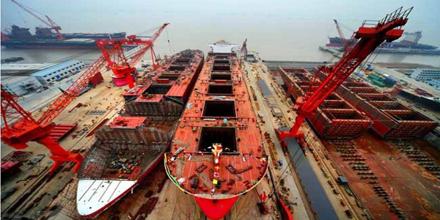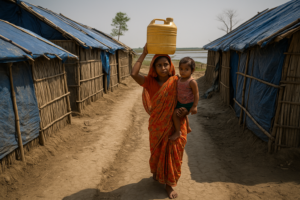Living on the Edge: Climate Refugees of Coastal Bangladesh

Life After the Water: The Struggles of Climate Refugees in Coastal Bangladesh
In the low-lying coastal regions of Bangladesh, the sea no longer follows the rules. Saltwater intrudes into once-fertile fields, cyclones batter homes with increasing intensity, and rising sea levels swallow villages one foot at a time. For thousands of families, staying is no longer an option. They flee not from war, but from water.
These people are climate refugees, though not yet legally recognized by international law and their numbers are growing. In Bangladesh, one of the world’s most climate-vulnerable countries, the human cost of climate change is visible in the swelling slums of Dhaka and Khulna, where new arrivals from the coast come every year in search of dry land and a livable future.
Coastal Displacement in Numbers
According to the World Bank, by 2050, climate change could displace over 13 million people in Bangladesh, with the southern coast most at risk. Already, districts like Satkhira, Khulna, and Bagerhat have seen tens of thousands displaced due to river erosion, salinity, and cyclones.
The 2009 Cyclone Aila alone displaced over 800,000 people. Many never returned home. The salinity left behind rendered lands barren, forcing migration to cities or embankments, where families built makeshift shelters with plastic sheets and bamboo poles.
A 2021 report by ICCCAD (International Centre for Climate Change and Development) noted that around 2,000 people are moving into Dhaka every day, many of them climate migrants escaping coastal degradation.
What Drives Climate Displacement in Bangladesh?
Climate displacement in Bangladesh is caused by a combination of environmental pressures that are worsening due to climate change. In coastal districts like Khulna, Satkhira, and Bagerhat, rising seas, saline soil, violent storms, and disappearing land are pushing families out of their homes.
Sea level rise is a major concern, with the Bay of Bengal advancing at nearly 8 millimeters per year, faster than the global average. This rising water turns freshwater sources salty, floods fertile lands, and destroys agriculture. As salinity spreads, it ruins crops, contaminates drinking water, and causes health problems like skin diseases and high blood pressure.
Cyclones are becoming stronger and more frequent. Disasters such as Sidr, Aila, and Amphan displaced hundreds of thousands and caused long-lasting damage. River erosion adds to the crisis by sweeping away homes and farmland overnight. These interconnected threats make coastal regions increasingly uninhabitable, forcing many to migrate inland in search of safety.
Slums and Overcrowding
Most climate migrants settle in urban slums like Korail in Dhaka or Boyra in Khulna. These densely packed settlements lack basic services—clean water, electricity, and proper sanitation. Waterborne diseases like diarrhea and mosquito-borne illnesses like dengue are common, especially during the monsoon.
Hope Amid Hardship: Resilience and Adaptation
Despite the immense challenges of climate displacement, many affected communities in coastal Bangladesh have shown remarkable resilience. With support from local NGOs, international agencies, and grassroots efforts, a range of adaptation strategies is helping families cope and rebuild. One such innovation is the introduction of floating farms and saline-tolerant crops. Organizations like BRAC and Practical Action have promoted hydroponic farming, floating gardens, and salt-resistant rice varieties, enabling people to continue farming without migrating. To reduce the impact of natural disasters, the UNDP and the Government of Bangladesh have developed cyclone-resistant housing, including raised concrete homes and multipurpose shelters. In cities like Khulna and Barishal, skill development programs in tailoring, mobile repair, and solar installation are equipping displaced youth with employable skills. Furthermore, community-led relocation initiatives, where entire villages are moved together with housing, land, and essential services, have offered a more stable and dignified alternative to scattered, informal migration. These efforts, though not widespread enough yet, provide glimmers of hope in an otherwise uncertain future.

What Needs to Be Done? A Way Forward
Legal Recognition
The international community must recognize climate-induced displacement as a valid reason for protection. Frameworks like the Platform on Disaster Displacement (PDD) should advocate for binding legal commitments.Urban Inclusion
City planning must adapt to integrate climate migrants by expanding access to affordable housing, healthcare, and education. Without such policies, urban inequality will worsen.Invest in Coastal Resilience
Strengthening embankments, promoting reforestation, and supporting community-led adaptation can reduce the pace of displacement and help people stay in their home regions longer.Climate Finance
Countries like Bangladesh, despite minimal emissions, face severe climate impacts. Wealthier nations must deliver on climate finance promises to aid displacement management and resilience-building.
From Victims to Agents of Change
The people displaced by rising waters in Bangladesh are not mere statistics. They are mothers, teachers, farmers, and children—forced to rebuild lives brick by brick, often in hostile conditions.
Their stories challenge us to rethink justice in the age of climate change. If we do not act, today’s climate migrants will become tomorrow’s global crisis. But with the right policies and support, they can become pioneers of resilience, not victims of neglect.
As climate migrants settle into overcrowded slums, another danger lurks—disease. Monsoon rains turn poorly drained areas into breeding grounds for waterborne illnesses like diarrhea, cholera, and dengue. Want to protect yourself and your loved ones? Check out this practical guide on how to stay safe from monsoon diseases in Bangladesh.






